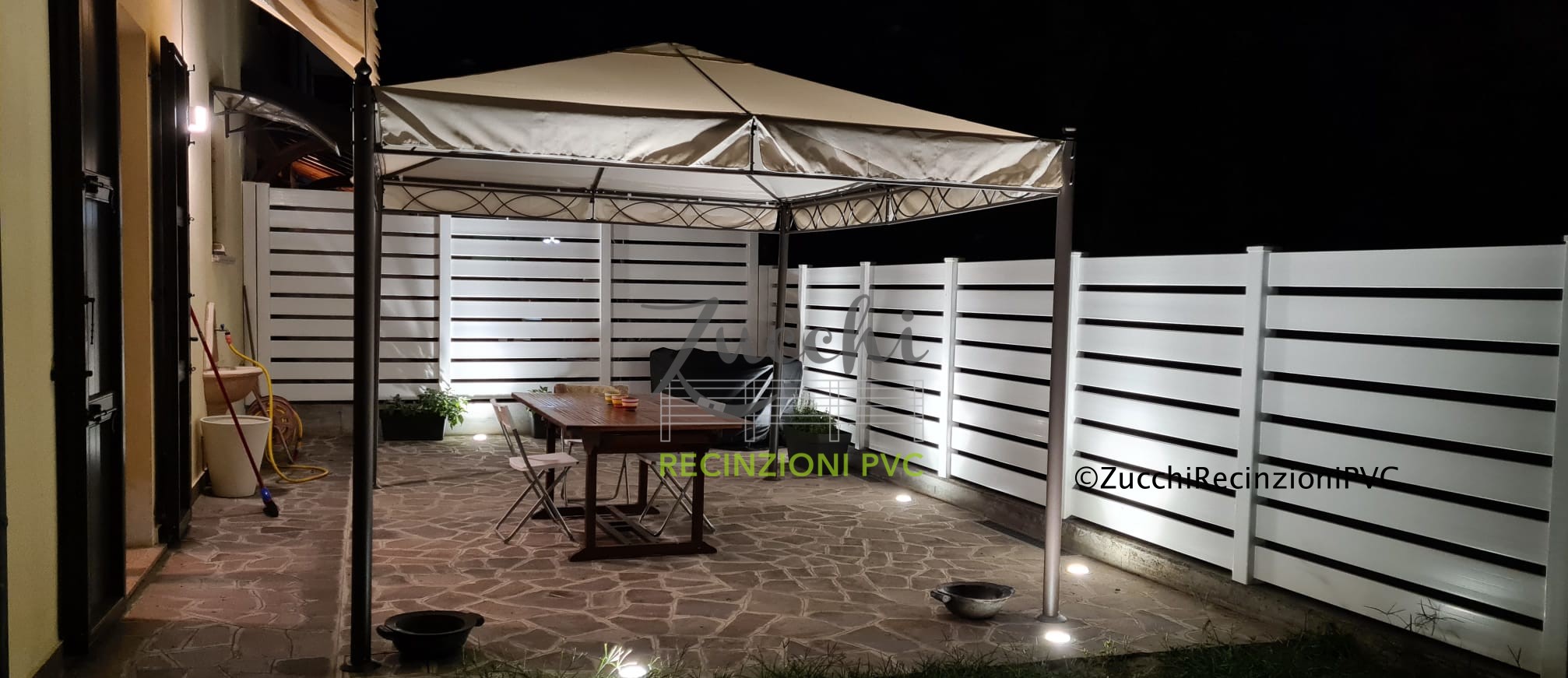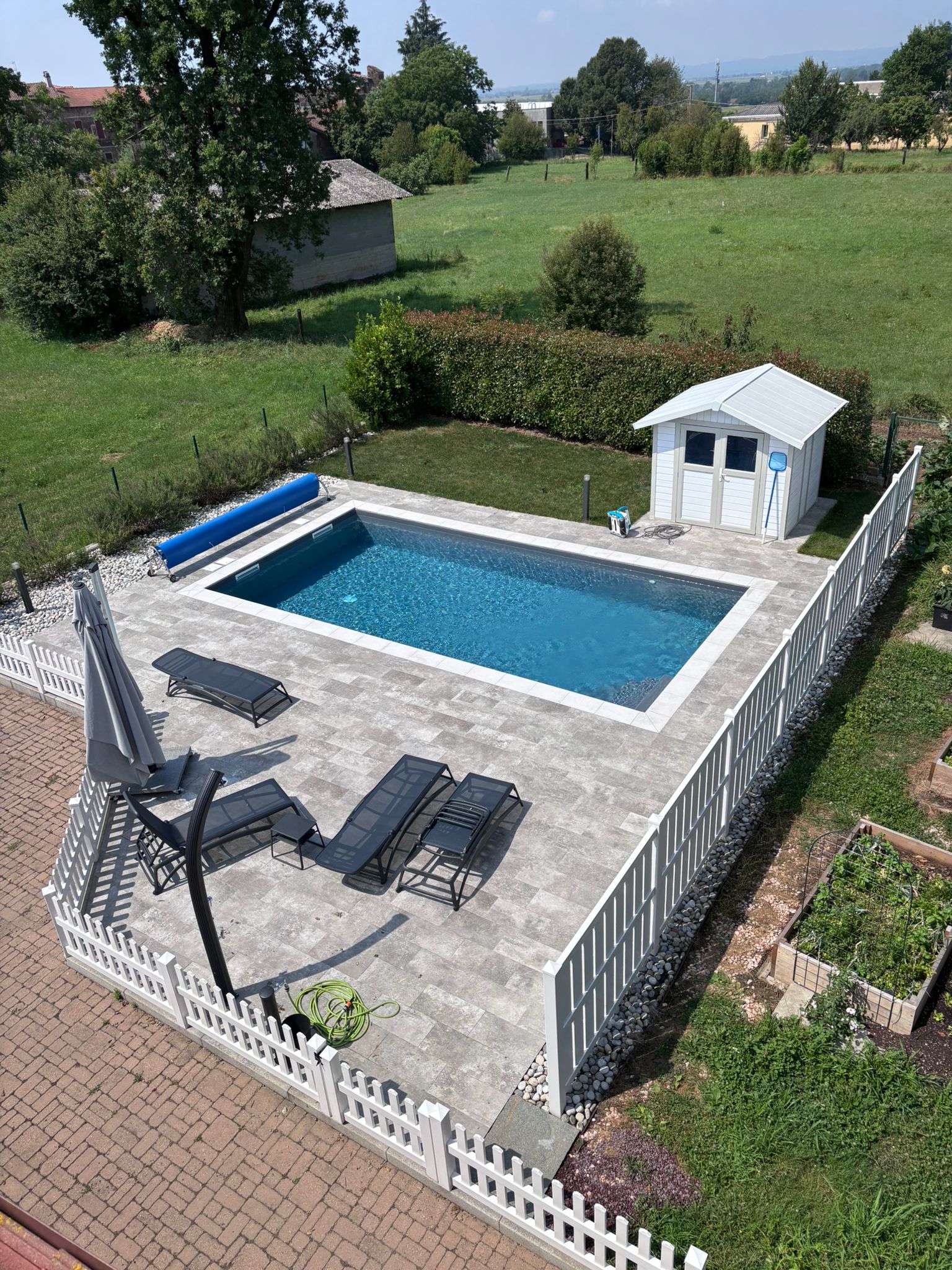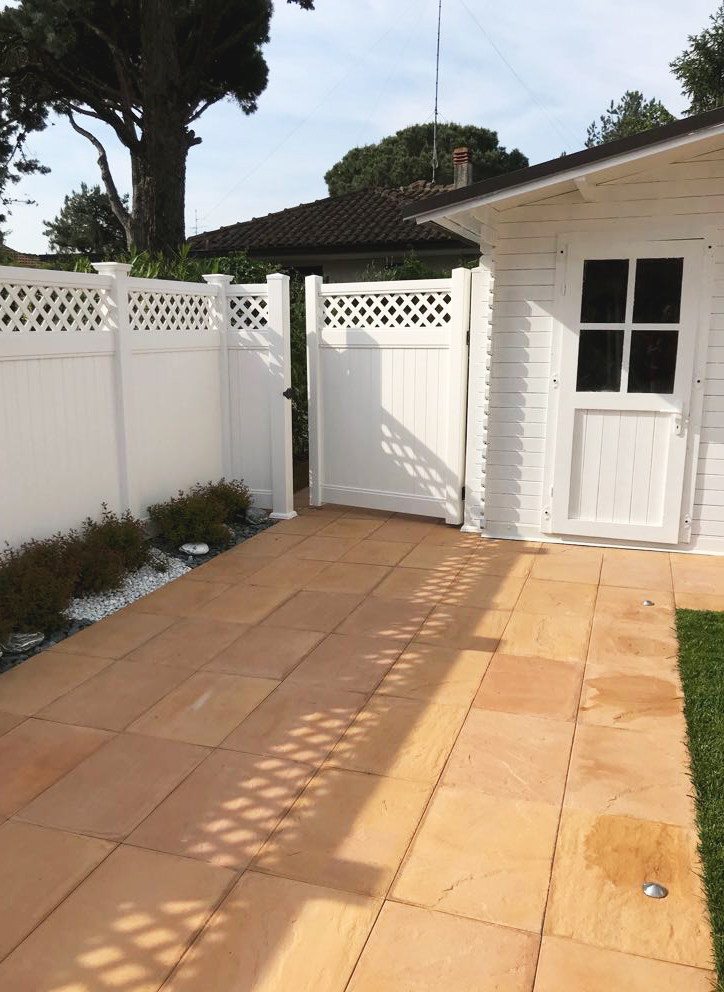Small and Large Gardens: Finding the Right Size for Your Space
If you have a garden, large or small, you know that choosing the right fence can make the difference between an anonymous outdoor corner and a space that really conveys your style. But how do you decide which type of fence best suits your garden? Don’t worry, whether you’re looking for something to enclose a small urban yard or to protect a large property, finding the right fit for your space is easier than you think!
Consider the Size of the Garden
The first thing to keep in mind when choosing a fence for your garden is obviously the size. Fences should not only demarcate the space, but should also be proportionate to prevent the garden from looking too enclosed or, on the contrary, too dispersed. A small garden, for example, will need a fence that does not overpower it, but at the same time creates a feeling of security and privacy. Here, low fences or those with open designs are ideal because they allow natural light to flow freely and keep the air open without feeling too “enclosed.”
If you have a large garden, however, the situation changes. The fence needs to be sturdy and imposing enough to clearly mark the boundaries of your space. An interesting option might be to choose taller fences or models with massive designs that create a clearly defined area without making your property look like a wasteland. A large garden, however, also allows you to play with more elegant solutions, such as fences with natural materials, which enrich the landscape and give it a harmonious and balanced shape.
The Shape of the Garden Counts
In addition to size, garden shape is another crucial aspect to consider when choosing a fence. If your garden is small but has an irregular shape, a straight fence may not be the best choice. In these cases, modular or curved fences are perfect. These designs are versatile and are best suited to spaces that do not have straight boundaries, creating a harmonious visual flow.
In addition, if your garden is long and narrow, a fence using horizontal lines can give an effect of openness, making the space seem larger and less confined. Conversely, for wide gardens, fences with vertical lines can give the illusion of height and depth, making the space seem larger and more airy.
Materials and Style: Not Only Functionality, But Also Aesthetics
Choosing the right material for your fence depends greatly on the type of garden you have and your aesthetic needs. For small gardens, lightweight wood or thin-bar metal fences are an excellent choice. These materials are not only easy to install, but also blend in with any type of design, maintaining the natural look without weighing down the space too much. If you want something more elegant, you can opt for fences with ornamental details, which give even a tiny garden a touch of class.
In larger gardens, however, you can experiment with more robust and defined materials. Fences made of solid wood or those made of stone are perfect for large spaces, because they not only offer greater security but also help create a visually strong and solid structure. These fences lend themselves particularly well to gardens that already have a strong presence of plants and shrubs, serving as a base that enhances the surrounding greenery.
Don’t Forget Privacy
Privacy is a key consideration for many people when choosing a fence for their garden. If you have a small garden, you may not want to give up privacy, even if space is limited. Fortunately, today there are thinner but equally effective fences that provide security without taking up too much space. Tall fences, made of materials such as bamboo or treated wood, are perfect for creating a natural barrier that not only protects you from outside gaze, but also adds a peaceful and welcoming atmosphere.
In larger gardens, privacy can be achieved through taller fences or with climbing plants that weave between the meshes of the fence itself. This not only creates visual protection, but also makes the fence a living element that changes and adapts with the seasons. If privacy is a top priority, opt for solid materials such as coated wire mesh or compact wood panels, which offer total protection from prying eyes.
Flexibility: Why the Right Fence Can Grow With You
Another key aspect of choosing a fence, especially if you have a garden that might change over time, is flexibility. For a small garden, it is important to choose a fence that can be easily adapted or modified if you decide to change the layout of plants or add new functional areas. Opting for a modular fence or one with easy-to-assemble panels will allow you to make small changes without having to do it all over again.
Even in larger gardens, flexibility is important, especially if you are thinking long-term. If you plan to expand or change your green space, choosing fences that can be easily adapted to new needs will save you time and money. Modular fences made of wood or metal are great for this function, allowing you to add or remove panels as needed.
Versatile Design: How to Choose from Different Fence Styles
When it comes to choosing the right fence for your garden, the variety of styles available can seem overwhelming. But don’t worry! Whether you’re going for a modern, rustic, or minimalist look, there are options for every type of outdoor space. The important thing is to figure out what best suits your needs and lifestyle. A good fence is not just about protection, but also about aesthetics. I will guide you through some of the most versatile options, helping you choose the one that’s right for you.
Modern Fences for an Elegant and Clean Look
If you love a minimalist, contemporary style, modern fences are an ideal choice. Imagine a linear, clean, no-frills design that perfectly complements modern gardens and minimalist architecture. The most popular materials used for these fences are metal, steel, or treated wood, which, in addition to being durable, also offer great aesthetic versatility. Metal fences, for example, are perfect for those seeking an industrial look, while wood, while maintaining an understated design, adds warmth and naturalness.
The beauty of modern fences is that they fit easily into any garden, large or small. In an urban garden, a steel fence, perhaps painted black or gray, lends elegance without taking up too much visual space. If your outdoor space is larger, you can opt for a more imposing design or even combine metal and wood for a contrast that enhances the garden. Simplicity and elegance go hand in hand in these styles, which allow you to protect your space without weighing it down.
Rustic Fences: For a Cozy and Natural Garden
If your style is closer to rustic, then a natural wood fence is right for you. Rustic fences are perfect for creating a warm and welcoming atmosphere. Suitable for country homes or gardens with plants and flowers, these fences blend beautifully with the natural environment. Untreated or treated wood gives an authentic, lived-in look that is enhanced with time.
A rustic fence is also perfect for those looking to add some privacy without sacrificing garden charm. If you own a garden with lots of plants or flowers, wood, especially if treated to resist weathering, will match the surrounding vegetation perfectly. Wood fences are also very easy to install, so if you love to DIY, this can be a fun and rewarding choice. If your garden is larger, a rustic fence can easily be expanded, with height and depth adding privacy and defining the boundaries of your space.
Classic Style Fences: Timeless Elegance
If your garden has a traditional soul, a classic-style fence is the perfect choice. These fences, which can be made of wood, wrought iron, or other material, are designed to give a timeless and elegant touch to your outdoor space. Wrought iron, in particular, is one of the most iconic materials for classic fences. With its sophisticated look and curved lines, it is ideal for those looking for something beautiful yet functional.
Classic-style fences are perfect for well-kept gardens, perhaps with flower beds, fountains or ornamental plants. Their elegance adds aesthetic value to your home and goes well with traditional or rustic architecture. Not only are they an excellent choice for defining garden boundaries, but they can also be combined with climbing plants, such as ivy or roses, for an even more charming effect.
Modular Fences: Flexibility and Customization
If you are not sure which style to choose and prefer something versatile, then modular fences are the ideal solution for you. Modular fences offer you the opportunity to easily customize the design, adapting it to the specific needs of your garden. This type of fence consists of panels that can be easily assembled, allowing you to create the shape and size you want.
The modularity of these fences makes them perfect for those with gardens that change over time. If you decide to add a new area to your garden or change the layout, you can do so without having to rebuild everything from scratch. In addition, modular fences are available in a variety of materials, such as wood, metal, PVC, or composite, and you can choose the one that best suits your personal style. This flexibility also makes them ideal for those who need a temporary solution or an enclosure that can be easily moved.
How to Choose the Right Fence for You
Choosing the right fence depends on a number of factors: the size of your garden, your personal style, and, of course, your practical needs. If you have a small garden and are looking for a design that doesn’t take up too much space, a modern metal fence or lightweight wooden module might be ideal. If, on the other hand, you want a more rustic and cozy atmosphere, a classic wooden fence is perfect for you. For those looking for a more versatile and practical solution, modular fences offer great flexibility and ease of installation.
In the end, the key is to choose a fence that integrates naturally with your outdoor space and lifestyle. There is no “perfect fence” for everyone, only the one that will make you feel happy and comfortable in your garden. Whether you are looking for an elegant, rustic, or minimalist design, there is always a solution waiting for you!







Leave A Comment